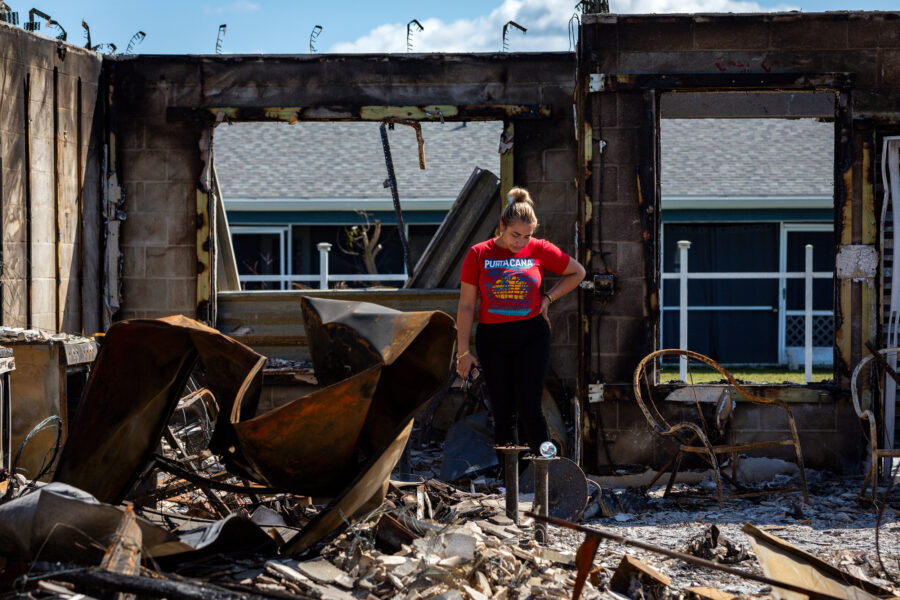World headed for 3.1°C warming: UN’s warning ahead of COP29
If countries continue with their current environmental policies , it would lead to 3.1 degrees Celsius warming over pre-industrial levels by the end of the century, a United Nations report has flagged, providing a reality check of climate action that reveals that it is almost certain that countries will collectively fail to achieve the Paris Agreement’s goals.

Full implementation of both unconditional and conditional NDCs (Nationally Determined Contributions, basically emission reduction targets and the conditional ones are those that require external support) would only reduce expected emissions in 2030 by 10%, leading to up to 2.6 degrees C of warming. Implementing current conditional NDCs would deliver up to 2.8 degrees C of warming , the report titled: “The Emissions Gap Report 2024: No more hot air…please!”
The report released on Thursday ahead of COP29 to be held in Baku, Azerbaijan from November 11 to 22 is a dire warning to countries as the assessment also reveals that increase in total greenhouse gas emissions has been above average from 2022 levels at 1.3%. In the decade preceding the Covid 19 pandemic (2010-2019) GHG emission growth averaged 0.8% per year. Authors of the report said countries are worse off now compared to the preceding decade in terms of climate action.
To keep global warming under 1.5 degrees C, emissions must fall 42% by 2030, compared to 2019 levels. For 2 degrees C, emissions must fall 28% by 2030. In the 2035 nationally determined contribution targets, emissions must fall 57% for 1.5 degrees C and 37% for 2 degree C, the United Nations Environment Programme (UNEP) said.
“Climate crunch time is here. We need global mobilisation on a scale and pace never seen before – starting right now, before the next round of climate pledges – or the 1.5 degrees C goal will soon be dead and well below 2 degrees C will take its place in the intensive care unit,” said Inger Andersen, Executive Director of UNEP in a statement. “I urge every nation: no more hot air, please. Use the upcoming COP29 talks in Baku, Azerbaijan, to increase action now, set the stage for stronger NDCs, and then go all-out to get on a 1.5 degree C pathway.”
“The cuts required are relative to 2019 levels, but greenhouse gas emissions have since grown to a record high of 57.1 gigatons of carbon dioxide equivalent in 2023,” the report said.
G20 countries fail to deliver
G20 member states, minus the African Union, accounted for 77% of emissions in 2023. Greenhouse gas emissions across the G20 members also increased in 2023. The six largest GHG emitters accounted for 63% of global GHG emissions. By contrast, least developed countries accounted for only 3%, the report highlighted.
The report also underlined that despite significant changes in the past 20 years, large disparities remain between the current average per capita and the historical emissions of major emitters and world regions.
India’s total GHG emissions increased by 6.1% in 2022-23 period but its per capita emissions in 2022 remained 2.9 tCO2e/capita compared to 11 tCO2e/capita for China and 18 tCO2e/capita for US. “Average per capita GHG emissions are close to three times higher than the world average of 6.6 tCO2e in the United States of America and the Russian Federation, while they remain significantly below it in the African Union, India and least developed countries. Consumption based emissions also remain highly unequal,” the report said.
Several G20 countries have not peaked yet including China, India, Indonesia, Mexico, Saudi Arabia, Republic of Korea, and Türkiye.
The report however also said it was still possible to bridge the emissions gap. It said increased deployment of solar photovoltaic technologies and wind energy could deliver 27% of the total reduction potential in 2030 and 38% in 2035. Action on forests could deliver around 20% of the potential in both years. Other strong options include efficiency measures, electrification and fuel switching in the buildings, transport and industry sectors. This potential illustrates it is possible to meet the COP28 targets of tripling renewable energy capacity by 2030, doubling the global average annual rate of energy efficiency improvements by 2030, transitioning away from fossil fuels, and conserving, protecting and restoring nature and ecosystems.
Disclaimer: The copyright of this article belongs to the original author. Reposting this article is solely for the purpose of information dissemination and does not constitute any investment advice. If there is any infringement, please contact us immediately. We will make corrections or deletions as necessary. Thank you.
Title:World headed for 3.1°C warming: UN’s warning ahead of COP29
Url:https://www.investsfocus.com









